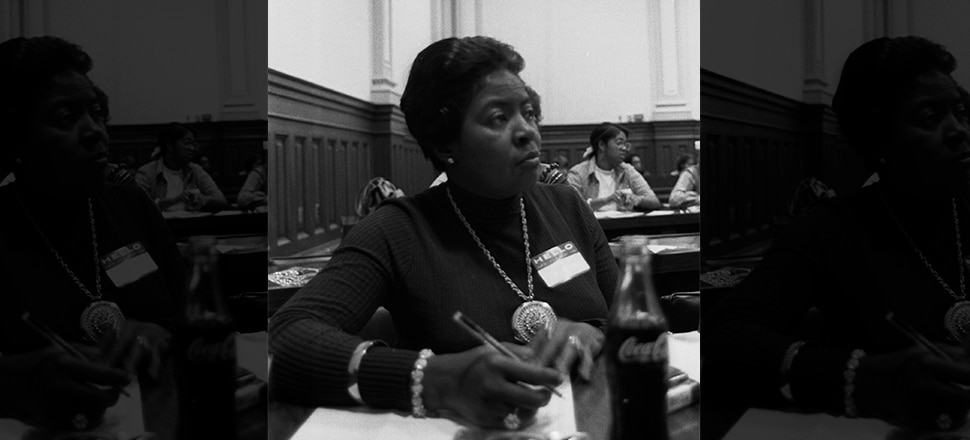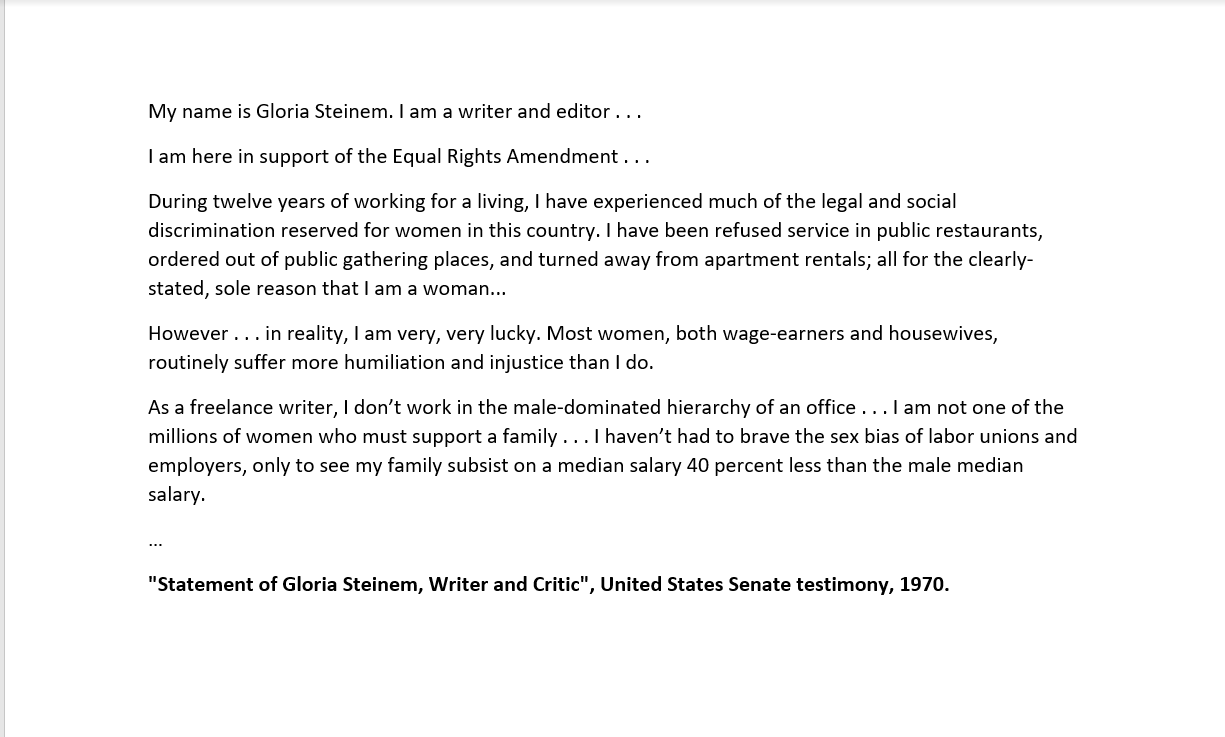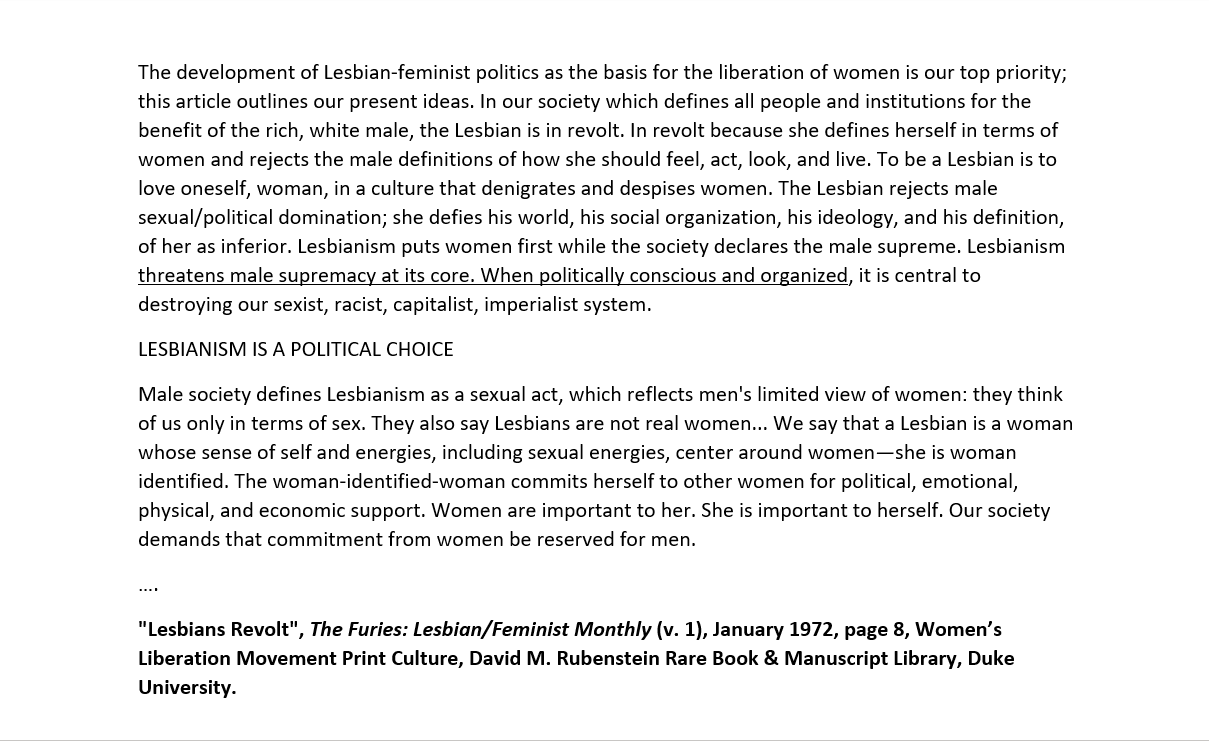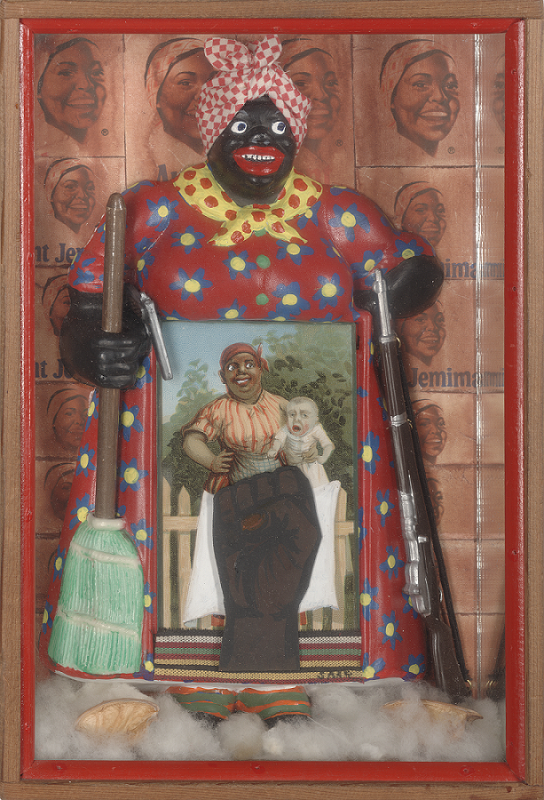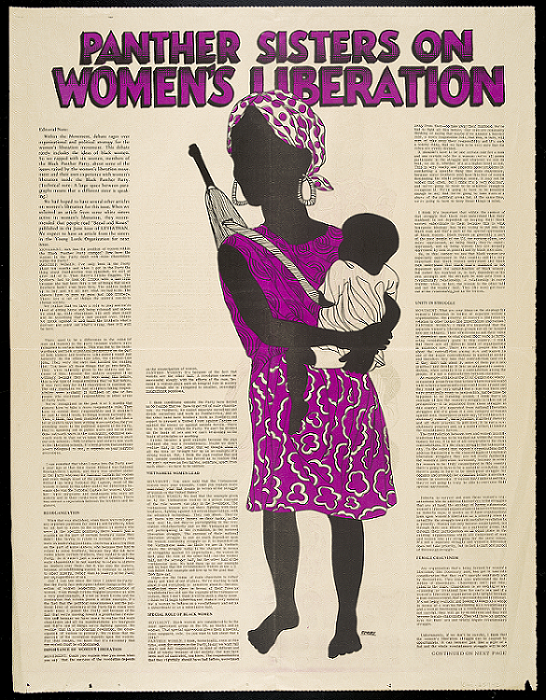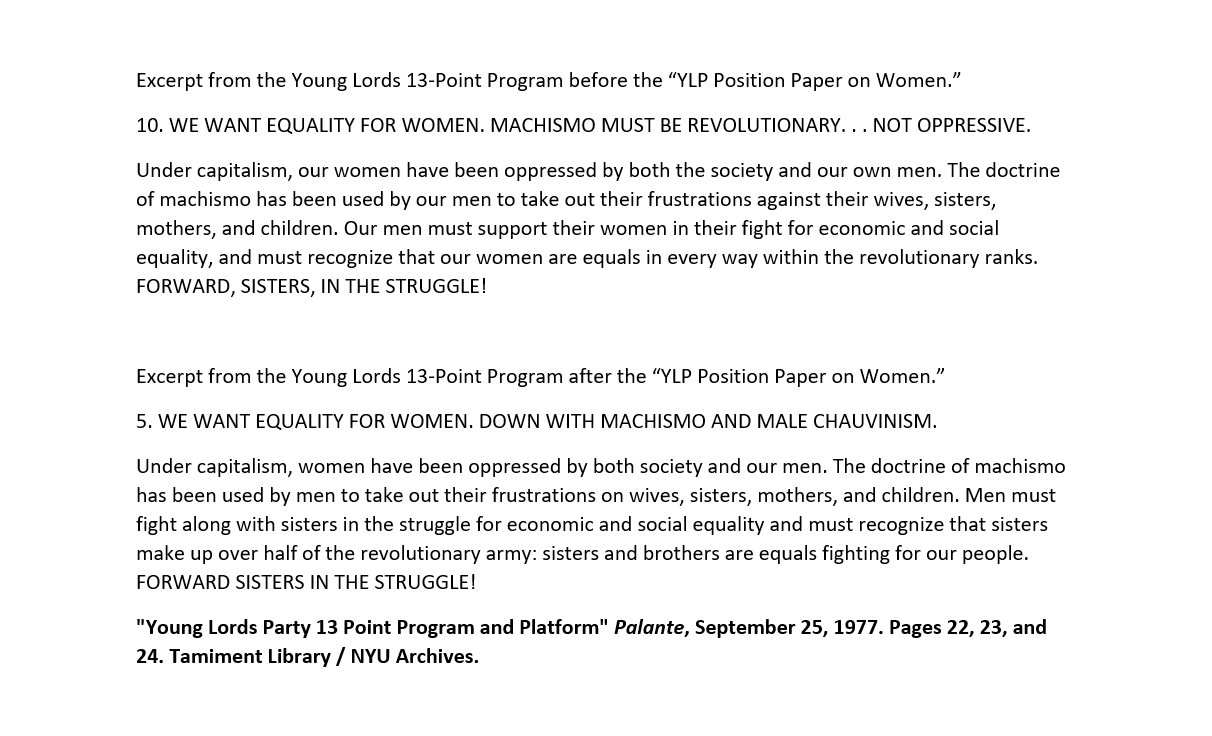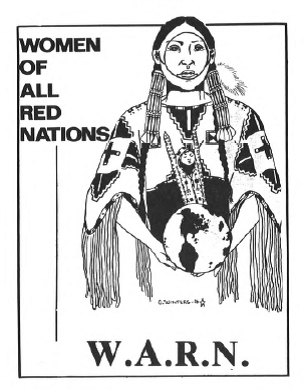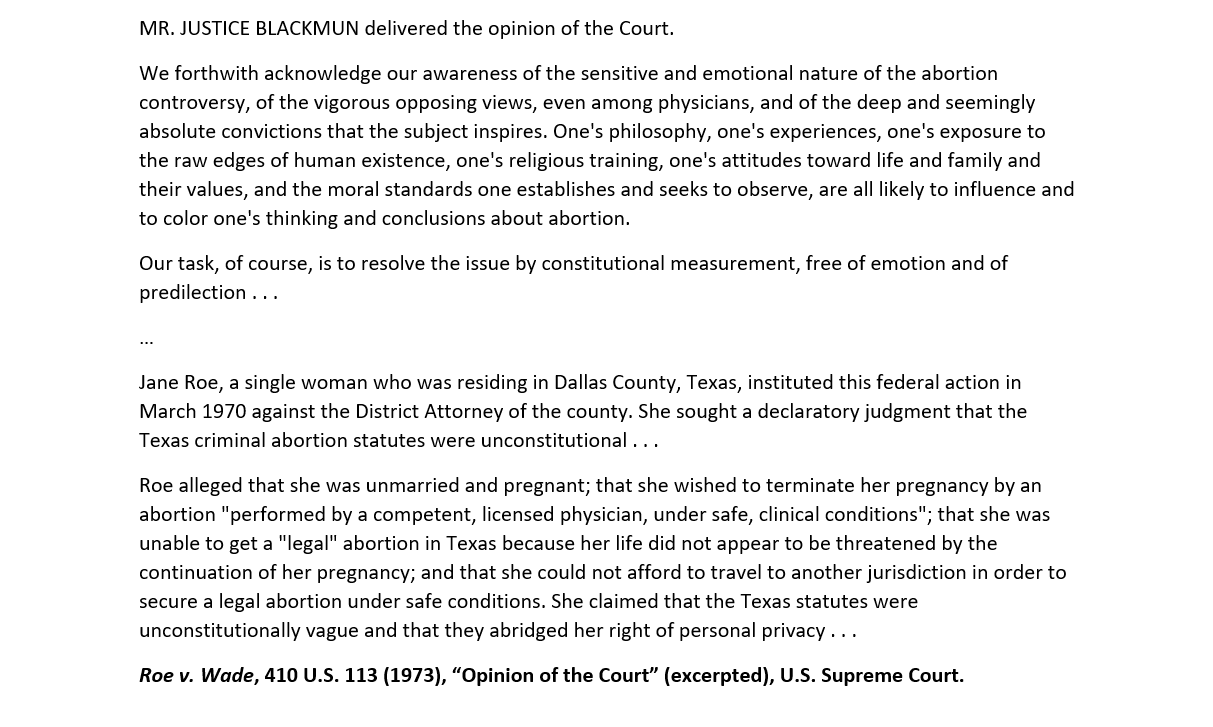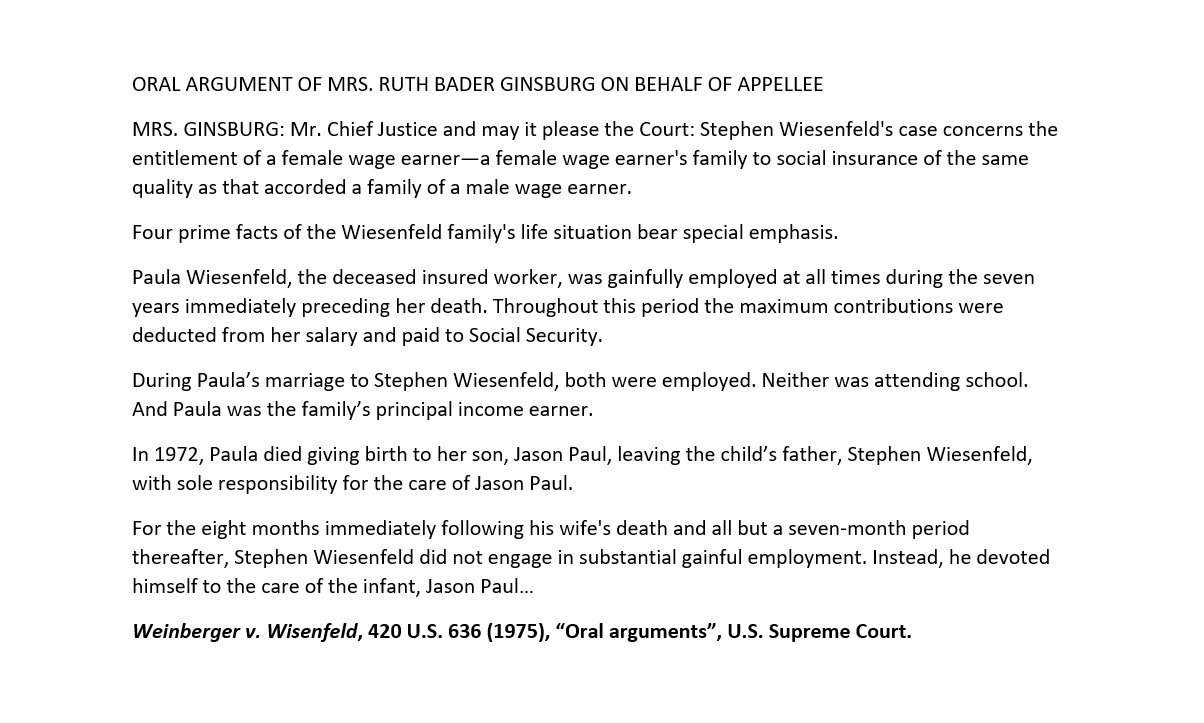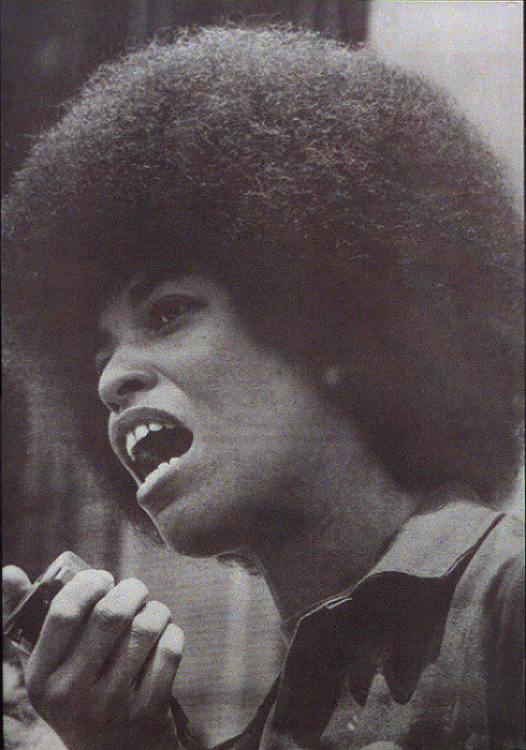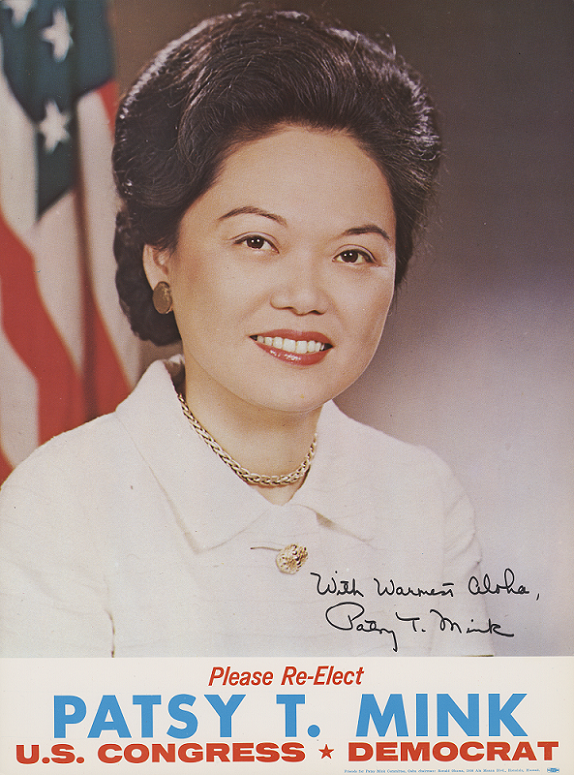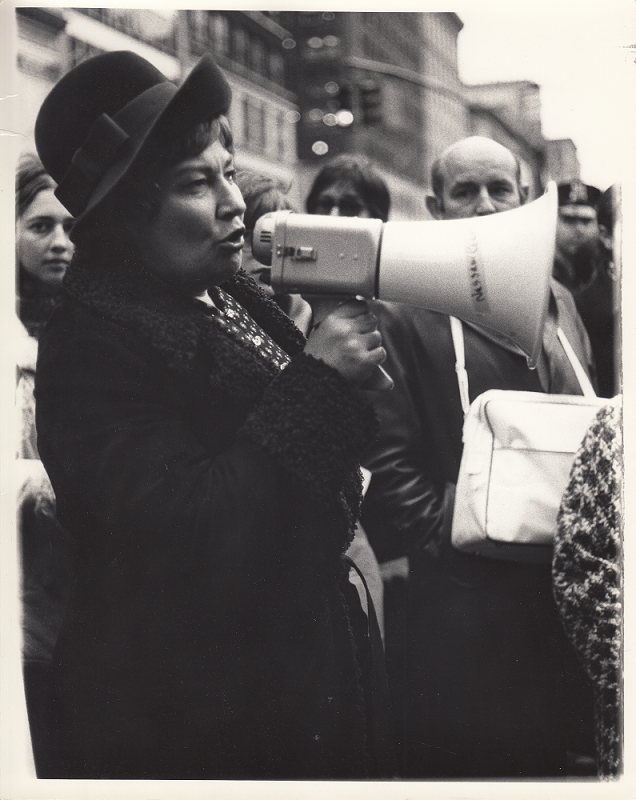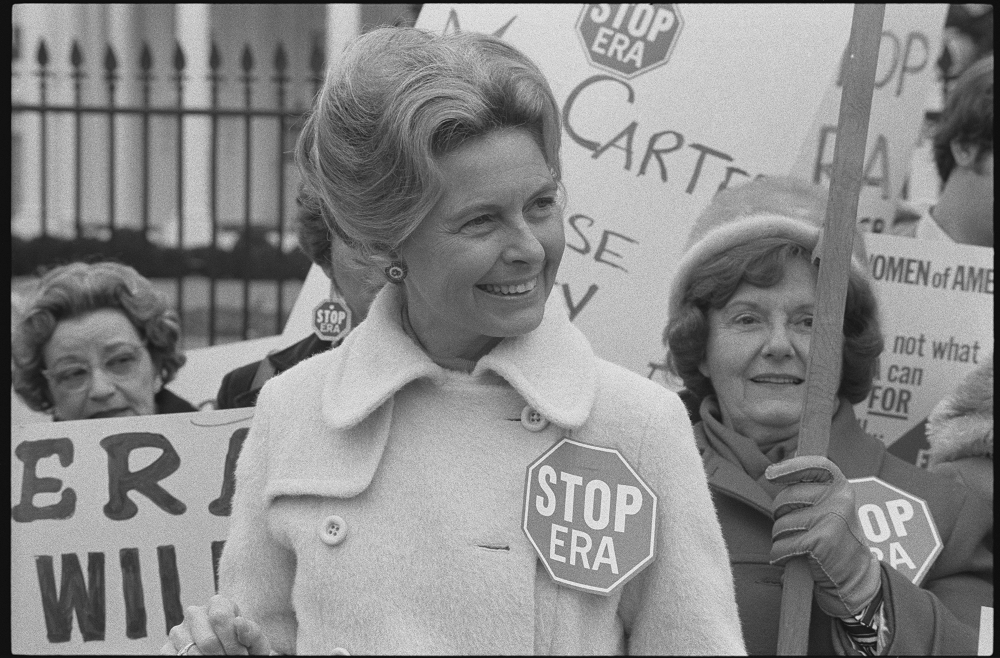Key Ideas
1. Many women who participated in and witnessed the various civil rights movements of the 1950s and 60s started to realize that they – as women – can and should demand equality.
2. Women of diverse backgrounds embraced the ideas of feminism and women’s liberation, but this did not mean that they all agreed or supported one another.
3. Feminists sought equality through a wide range of collective and individual efforts.
4. While the women’s liberation movement gained significant momentum through the 1970s, conservative women (and men) began to build a counter narrative based on so-called traditional American values.
Introduction
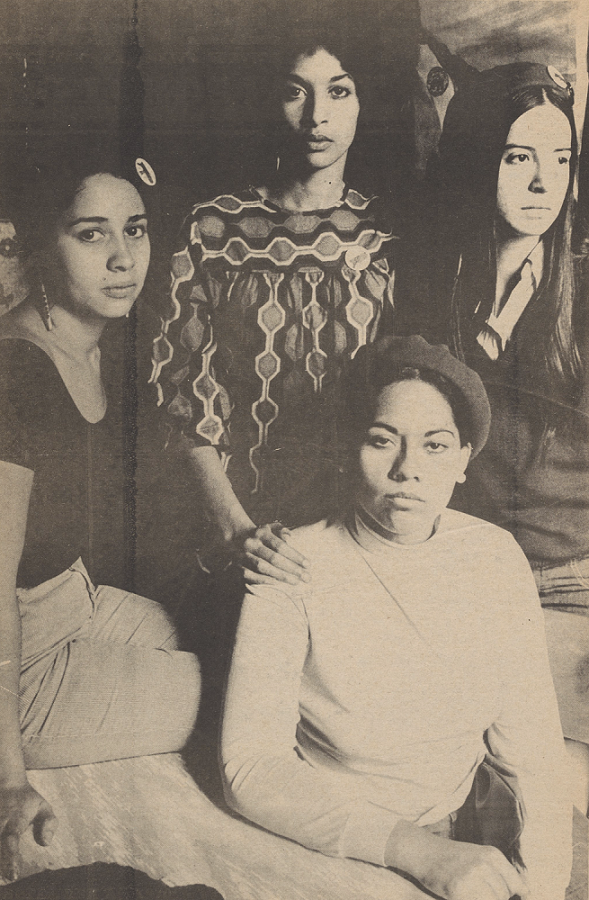
“Young Lords Party 13 Point Program and Platform” Palante, September 25, 1977. Pages 22, 23, and 24. Tamiment Library / NYU Archives.
Feminism and the Backlash, 1969–1977
Women enthusiastically participated in and led the wave of activism that overtook the United States in the 1960s. As the 1970s began, many of these women started to ask what all the social and political change meant and how it would ultimately affect them.
The word ‘feminism’ dates back to the 19th century. During the Progressive Era, it described women of the political left who sought to extend the conversation beyond suffrage. To them, feminism meant access to life beyond domesticity. Feminism meant something quite different to the activists witnessing and participating in the fight for civil rights. If Black, Latinx, and LGBTQ citizens could demand liberation, so too could women. Nothing short of full equality under the law was acceptable.
Feminists sought equality in a variety of ways. For some, entities like the National Organization for Women and the National Women’s Political Caucus provided an entry point to women-led activism. These large, and primarily white, membership-driven groups were effective in gaining media attention. However, they sometimes struggled to create authentic connections with the diverse array of women wanting liberation.
Section Essential Questions
1. How did women of the 1970s define feminism and women’s liberation?
2. What connections existed between the activism of the 1960s and the growing demand for women’s liberation in the 1970s?
3. How did feminists of diverse backgrounds work together (and not work together) to achieve their goals?
4. How did conservative women view the women’s liberation movement and what actions did they take to stop it?


